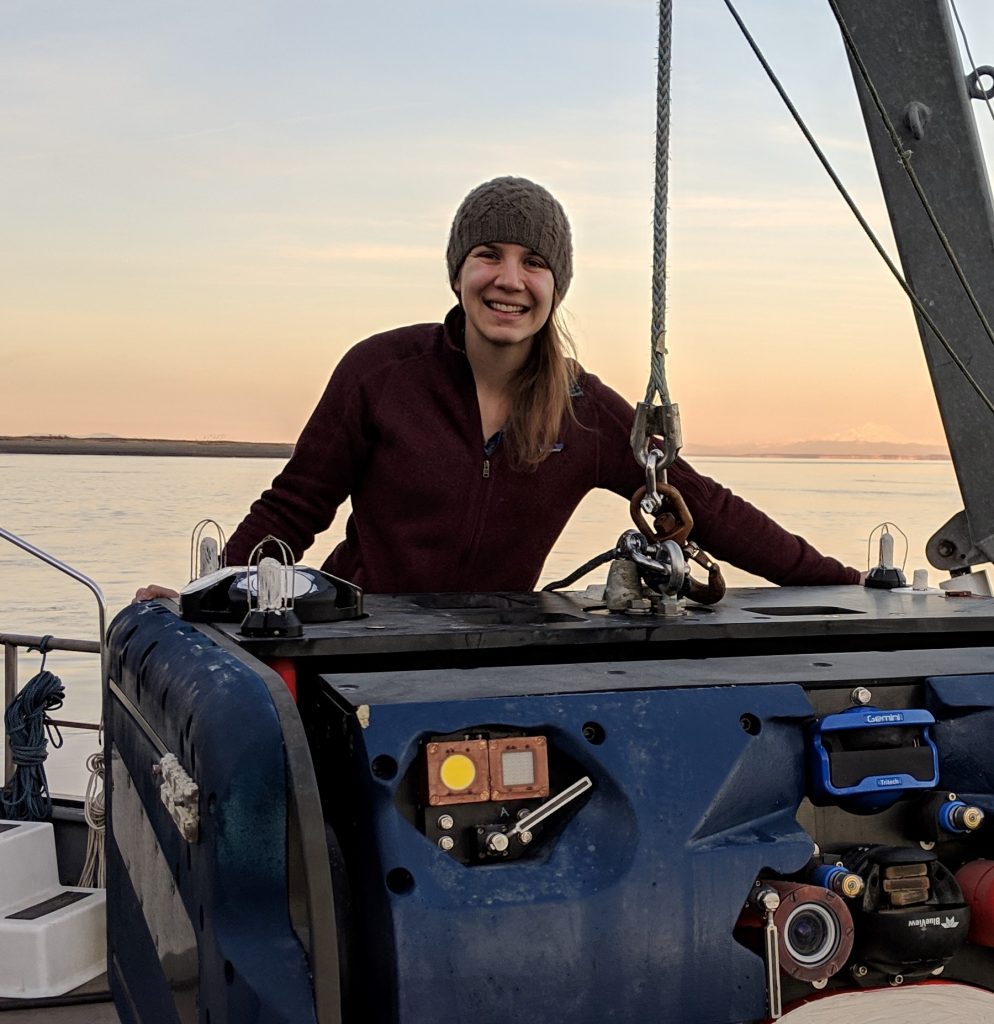Counting fish—with sound April 28, 2021
Acoustic measurements from a ship and an underwater robot help scientists estimate how many fish are in the twilight zone.
You know The Marvelettes song, “Too many fish in the sea”? That’s what scientists hum while trying to figure out how many organisms, or biomass, is in the ocean twilight zone. The estimated weight of mid-ocean dwellers around the world ranges from one to 15 gigatons— a number that scientists are trying hard to refine so that potential commercial fisheries can be harvested sustainably. A more accurate number would also help them determine how much carbon the ocean takes up from the atmosphere (through the biological carbon pump) so they can track changes to the climate.
That elusive goal just got a little closer, thanks to a new analysis of methods used to estimate the abundance of creatures in the twilight zone. Typically, researchers rely on advanced echosounders (which anglers might know as fish-finders) mounted to the hull of a ship to look for density changes (known as “backscatter”) over a large area.
While this method reliably reveals schools of fish and other organisms throughout the water column, scientists have to make assumptions about what they’re looking at— guesses they try to ground-truth by simultaneously sampling with a trawl net— to estimate the number, size, and even type of fish.
In an April 2021 study published in the Journal of the Acoustical Society of America Express Letters, Woods Hole Oceanographic Institution acousticians Andone Lavery and Emma Cotter make a case for combining shipboard echosounder measurements with acoustic measurements of organism density (known as “biomass”) collected by a robot at specific depths.
Cotter made use of data collected by Deep-See, an underwater platform towed by the NOAA ship Henry B. Bigelow off of the New England continental shelf break during a research cruise in the summer of 2019.
“Conversion of shipboard measurements to biomass requires several assumptions or measurements, using time- and labor-intensive trawls,” says lead author Emma Cotter, a former WHOI post-doctoral researcher who is now with the Pacific Northwest National Laboratory. “By using Deep-See, we could compare short-range, in situ measurements with those collected by the shipboard echosounder. In general, estimates from Deep-See and the ship-based echosounder agree well, indicating that it’s possible to estimate the number of organisms in the twilight zone from the surface."
For the purposes of this study, Cotter, Lavery and their co-author Christopher Bassett (University of Washington) did not attempt to translate their measurements to an estimate of biomass. In a forthcoming study, they trained a computer to categorize individual organisms, based on acoustic signatures gathered by Deep-See. While still in development, machine learning could rapidly advance our understanding of what (and how much) lives in the twilight zone— and how those numbers are changing over time.
- All Entries
- Climate
- Life
- Missions
- Policy
- Technology







